I enjoy rounding up what I have read on a seasonal basis because some a lot and some months I need to write deeply and binge the newest series on Netflix. This winter (December, January and February) I read 23 books. You can check out my 2019 Fall Round-Up and 2019 Summer Round-Up if you love book lists.
One thing I am hoping to do with these round ups is create some transparency with how I read as much as I do—where I get my books and how I consume them. Hopefully it gives a clearer picture of how I read for those of you who have either expressed curiosity about how I manage to read so much or interest in increasing how much you read. So to that end along with the title and author I have added the format in which I consumed each book—hardcopy, digital library loan, audiobook—as well as the length of the book. All of my audiobooks are free from the library app Libby. I really do hope that by including these two new details to create some transparency that is both honest and encouraging.
I tried last roundup organizing what I read into fiction, non-fiction and poetry to see how my reading is dispersed. I still really love this way of organizing what I’ve read because it helps me see a larger picture of what I’m consuming and what might have been missing from a particular season of reading.
So without further ado…here are the books I read this winter season of December, January and February:
Fiction
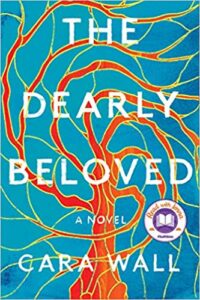 The Dearly Beloved by Cara Wall
The Dearly Beloved by Cara Wall
Format: Hardcopy; Length: 352 pages
In all my years of reading I have never fallen in love with a book based off the blurb in the front jacket or cried during the prologue. The Dearly Beloved follows two couples in ministry as they negotiate their faith, marriage and friendship over the course of several decades. Wall delivers a book that is tender without being saccharin or sentimental, thoughtful without being preachy. She captures the motivations and nuances of the calling of ministry beautifully. This may be one of my favorite books ever, I already want to re-read it.
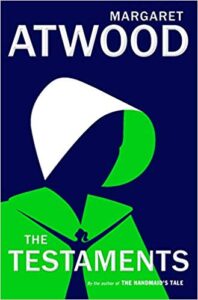 The Testaments by Margaret Atwood
The Testaments by Margaret Atwood
Format: Library Digital Copy; Length: 432 pages
I wasn’t wild about The Handmaid’s Tale, I think there are better books out there that look at gender, patriarchy and the future (The Power by Naomi Alderman for one). But The Testaments got rave reviews by people I trust so I was curious what it offered beyond the first book and the television show and how, perhaps the success of the television series might have influenced Atwood’s writing. Given that my expectations were low, I was pleasantly surprised to have discover an interesting tale focusing on one of the antagonists from the first book, giving us a glimpse of Gilead further in the future and flashbacks to its beginnings. On the whole it was enjoyable and entertaining to read, although I still found it lacking in its ability to provoke the moral imagination.
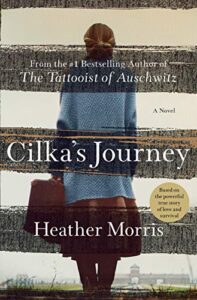 Cilka’s Journey by Heather Morris
Cilka’s Journey by Heather Morris
Format: Audiobook; Length: 11 hours
I read this via audiobook from the library over the holidays. I came into it with middling expectation given I was underwhelmed with The Tattooist of Auschwitz and this particular book follows the story of a secondary character from that book. However, I was wrong to have lowered expectations. I immediately found Cilka’s Journey a stronger read following Cilka from the liberation of Auschwitz Birkenau to a second internment at a gulag in Siberia. Through flashbacks you learn about Cilka’s life before WWII and her life in the German concentration camps and how it shapes her present serving out a term for aiding the enemy. It wrestles with what it means to be a woman, survive Auschwitz and to be judged for your survival. It also deals with friendship and self-forgiveness thoughtfully and with nuance. I found it to be moving and complex. I do think that there ought to be a TW on the book for sexual violence because that plays as one of the major themes in the book.
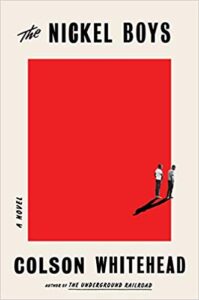 The Nickel Boys by Colson Whitehead
The Nickel Boys by Colson Whitehead
Format: Hardcopy; Length: 224 pages
This book was not fun, but it is an important read. We read for lots of reasons–for adventure, perspective, to feel good–but I find it important to read to be made uncomfortable, to think, to know things that are easier to not know. The Nickel Boys tells the story of Elwood who is sentenced to the brutal childrens school/prison in Florida after hitching a ride in the wrong car on his first day of community college. I learned about a part of recent US history that I wasn’t taught in school through Whitehead’s moving and brutal portrayal of the racism and brutality of mass incarceration of children.
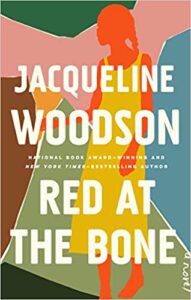 Red at the Bone by Jaqueline Woodson
Red at the Bone by Jaqueline Woodson
Format: Audiobook; Length: 4 hours
I listened to Red at the Bone last week and deeply enjoyed this multigenerational story. Weaving together the story of the destruction of Black Wall Street in Tulsa, OK with a modern day story of the dreams parents hold for their children and the small rebellions of children that often have greater consequences Woodson tells the tale of a family on their daughter’s 16th birthday. I could not pause this story it was so engaging. Each of the narrators was emotionally engaging and fascinating, creating an experience that was both gentle and sharp. Being such a short read not a word was wasted, not a story went without serving the whole. I appreciated that much of the story spins from the consequences of the destruction of Black Wall Street, a story in American history often not told. If you loved Brit Bennett’s The Mothers this will give you the same interesting characters and generational family story vibe.
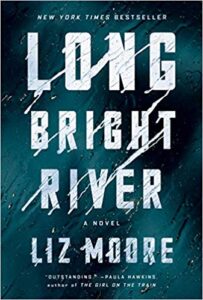 Long Bright River by Liz Moore
Long Bright River by Liz Moore
Format: Hardcopy; Length: 496 pages
Mickey is a patrol officer in the Kensington neighborhood of Philadelphia. A neighborhood known for and ravaged by heroin, Mickey’s sister after succumbing to the undertow of addiction is now missing and there’s a sudden rash of deaths in the neighborhood that don’t look like part of the usual overdose deaths. A quick paced and fascinating read, Moore looks at the gritty and heartbreaking effects of addiction without turning it into trauma porn, dealing with the subject matter and her characters with dignity, respect and nuance. Plus she can write one heck of a cop/detective thriller/mystery. Highly recommend Long Bright River if you like a good mystery meets family drama.
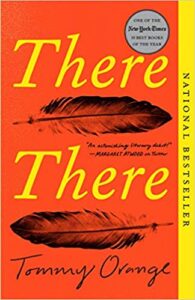 There There by Tommy Orange
There There by Tommy Orange
Format: Audiobook; Length: 7 hours
An immersive exploration of what it means to be a contemporary Native American, Tommy Orange leads us through interwoven stories of identity, origin, family and mythology to deliver something truly unique, at least to my reading palette. Set mostly in Oakland, California There There tells the story of several characters as they prepare for and attend the Oakland Powwow, a gathering to celebrate and educate Native identities. Powerful, moving and heartbreaking. I listened to this one on audiobook after the hard copy had sat on my shelf for a few months. I can’t say why I waited but I’m so glad I picked it up. As someone who grew up in Oklahoma, where we learned about the forced relocation and genocide of Native peoples I found Orange’s book a powerful look at a people we prefer to think of as in the past, rather than a people living in the present, grappling with the past. I love a book that delivers something unexpected and Orange truly does that in the larger themes of this book.
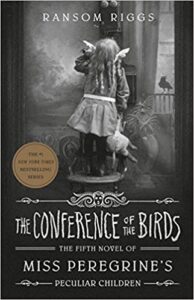 The Conference of the Birds (Peculiar Children #5) by Ransom Riggs
The Conference of the Birds (Peculiar Children #5) by Ransom Riggs
Format: Kindle; Length: 336 pages
This is the story of how one $1.99 Kindle deal five years ago can suck you into a whole series. This is also a story of how you can think you are signing onto a 3 book arc and then the author and publisher keep on going with the same world and characters. I loved the original three books from the Peculiar Children’s series, but The Conference of the Birds was underwhelming and left me asking “why am I still invested in this series? What’s at stake and why do I care about this world and characters now?”
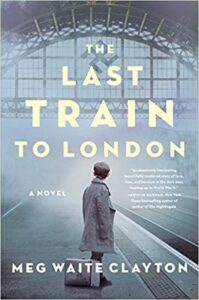 The Last Train to London by Meg Waite Clayton
The Last Train to London by Meg Waite Clayton
Format: Digital Library Book; Length: 450
I used to love WWII historical fiction, but I am increasingly growing weary of the genre not only because many of them follow the same themes but I am also aware of how the popularity of the genre is really a grappling with white violence and racism and the need for white people to make meaning of the darker impulses of racism. Yeah, that’s where I am at. However, I found The Last Train to London an interesting take on the genre because it explores the themes of childlessness and womanhood, friendship and shifting power. Did this book ease my concerns for the genre? No, but it was a fresh take on this time in human history that allowed space for nuance.
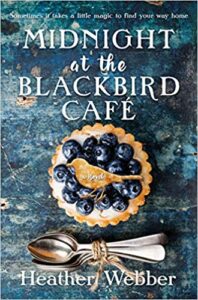 Midnight at the Blackbird Cafe by Heather Webber
Midnight at the Blackbird Cafe by Heather Webber
Format: Audiobook; Length: 12 hours
Sometimes I end up reading books because they are available on Libby, the library app. I need something to listen to and I scroll the available titles and ta da! Due to the mix of available titles I end up listening to books I might not normally select, which is how I ended up reading Midnight at the Blackbird Cafe a story of family inheritance with a bit of magical realism. A story that follows a woman on the verge of attending medical school who is required to manage her deceased aunt’s cafe for three months in order to receive her inheritance. This was a sweet and delightful story about small town life, family history and living the life you want rather than the life that’s expected.
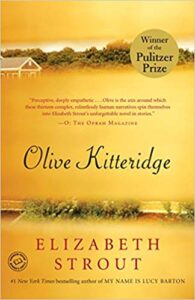 Olive Kitteridge by Elizabeth Stroud
Olive Kitteridge by Elizabeth Stroud
Format: Audiobook; Length: 12 hours
This Pulitzer Prize winning novel has been on my radar for quite some time and with the release of Olive, Again, I thought I would pick up Olive Kitteridge. Following the lives of the residents of Crosby, Maine, Stroud intersects the tender and mundane and somehow Olive, a gruff retired school teacher finds herself in the middle of small town life. I wanted to like this book, however, I found the audiobook hard to follow because the book switches point of view but the same narrator/reader was used the entire story which made the switch in POV and the many characters had to track. This is the perfect example of how investing in multiple narrators can help the story come alive or make it difficult to follow and become a distraction. I also didn’t realize this is a collection of short stories loosely tied together by the commonality of the town and not much more. Olive who features heavily in many stories is ultimately a character that has no epiphany or change of heart–she remains gruff and unreflective to the end.
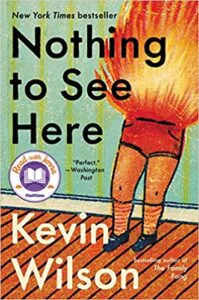 Nothing to See Here by Kevin Wilson
Nothing to See Here by Kevin Wilson
Format: Hardcopy; Length: 272 pages
Darkly funny books are too few in my opinion, so I completely enjoyed Nothing to See Here for its quirkiness and snark. It follows the story of a young woman who is lost and adrift when a complicated childhood friend calls and asks her to come help her. The task is to take care of her two step-children that spontaneously combust when they get upset. As I mentioned in a previous post, when this book was released I didn’t think it was something I would find interesting. Magical realism is a tricky genre because it can be too obscure or ask you to suspend too much reality without being full on fantasy. However, in Nothing to See Here Wilson asks you to suspend just the right amount of reality and replaces it with magic that is metaphorically so close to what’s real it’s believable. This book clocks in on the short side at 272 pages and so I deeply appreciate the way Wilson gets down to business—5 pages in and the protagonist is presented as likably flawed, someone that makes mistakes, is a little immature but that you want to see succeed. It takes good writing to pull that off so succinctly. Quirky, quick witted and insightful, I highly recommend this one.
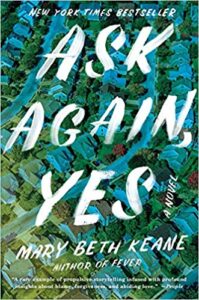 Ask Again, Yes by Mary Beth Keane
Ask Again, Yes by Mary Beth Keane
Format: Hardcopy; Length: 390 pages
Where to start with this multi-generational family drama? Do I start by telling you about the last multi generational drama I tried to read but couldn’t get into despite rave reviews? Do I start with praise for how Keane opens the book and immediately invests you in Peter’s struggle to live in a world shaped by his mother’s mental illness? Or should I start with the dynamic between the Gleesons and Stanhopes, two neighboring families that struggle to connect while living only feet apart from one another on their suburban street? For me, family dramas can be hard to get into—why should I care about THIS particular family and the nuance of their unique struggle? Why is their mundane struggle worthy of my investment as a reader? Often I find that authors don’t give you enough to hook into and become invested but that’s not the case with Keane. In Ask Again, Yes Keane gives you characters that are complicated but engaging and a story that moves at a solid clip. I immediately wanted to root for Peter and was drawn to the sparkle of Kate’s spunky personality. I understood Lena’s attempt to be a good neighbor and what it felt like to be shunned. She also avoids getting bogged down in the inner musing of her characters and instead puts them in situations that show their head space by how they work through their situations which I appreciate in family drama writing. I also resonated with the theme of forgiveness in this book—how time can soften anger and give perspective. Forgiveness was handled thoughtfully without resorting to cliche or easy resolution.
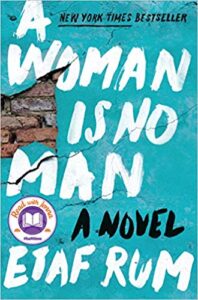 A Woman Is No Man by Etaf Rum
A Woman Is No Man by Etaf Rum
Format: Audiobook; Length: 10 hours
A powerful and unflinching look at gender, power and immigration, A Woman is No Man tells the story of three generations of Palestinian women in America struggling against the conventions of Arab culture. I found this book incredibly difficult to read because one of the main themes that runs through the book is the role of domestic violence in asserting domestic power over women. Although I appreciated that the book was written by an own voice author who grew up as a Palestinian American immigrant, it made me more comfortable with the subject matter and the way that Arab culture was portrayed. It was also a helpful reminder that there are still women who are socially isolated, cut off from education, economics and communal support.
Non-Fiction
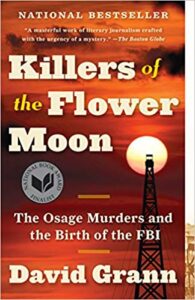 Killer of the Flower Moon: The Osage Murders and the Birth of the FBI by David Grann
Killer of the Flower Moon: The Osage Murders and the Birth of the FBI by David Grann
Format: Audiobook; Length: 9 hours
Growing up in Oklahoma our study of state history was intertwined with the forced relocation of Native peoples and genocide, so while Killer of the Flower Moon has been on my TBR list for a while, I knew when I read it I would need to be prepared for a story laced with cruelty, racism and indifference towards native language peoples. What I was not expecting was the deeply personal stories that Grann was able to immerse the reader in to show in specifics that larger scope and stakes of how oil wealth became a source of danger for the Osage people, who at one time were some of the richest people in the US. While Grann’s story telling lacked the quick paced and sharp edges that I like in non-fiction, I deeply appreciated that the publisher invested in multiple readers to help listeners understand point of view and voice in the book.
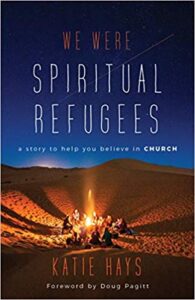 We Were Spiritual Refugees: A Story to Help You Believe in Church by Katie Hays
We Were Spiritual Refugees: A Story to Help You Believe in Church by Katie Hays
Format: Digital ARC; Length: 360 pages
I had the chance to read an advanced copy of We Were Spiritual Refugees and it was equal parts entertaining and informative. WWSR is an account of what the church might look like in the future—relationship (rather than institution) centered, no bullshit, embracing of all God’s beloved children. Several times I caught myself thinking “I would LOVE to be a part of this church.” In other words, it gave me hope. You can read my full review HERE.
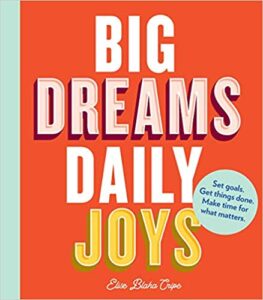 Big Dreams, Daily Joys by Elise Blaha Cripe
Big Dreams, Daily Joys by Elise Blaha Cripe
Format: Hard Copy; Length: 175 pages
I have been following Cripe on social media for years (ok, I actually followed her pre-IG back in the blogging days of the mid-to-late 2000’s) before she developed her goal tracking products or even her #make29 project. She is one of the bright, helpful and gracious parts of the internet and social media. I use her tools (goal tracker and get to work book) and appreciate her “try, make mistakes, learn, try again” approach to entrepreneurship, creativity and life. So when Big Dreams, Daily Joys came out I thought I would give it a quick skim and glean some tips. I found it to be accessible without being fluffy and I came away with clear, actionable practices that were not too idealistic or require you to live the perfect life to be able to accomplish.
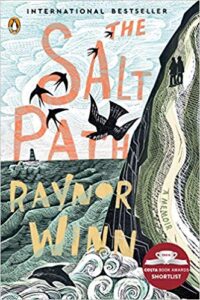 The Salt Path by Raynor Winn
The Salt Path by Raynor Winn
Format: Audiobook; Length: 10 hours
This book popped up on the periphery of my radar a few times last year so when I spotted it on my library app I placed a hold. Sometimes finding the next delightful read is as simple as that. The Salt Path follows Winn and her husband as they hike the coast–not on holiday but because they have recently lost their farm and are homeless. Following their poverty and survival with wit and insight, Winn gives you not a sweeping biography but a stunning and insightful sliver of her life at a particular time. The Salt Path is one of those rare biographies that is so grounded in a sense of place and a specific moment that it captures you instantly into the lives of the writer.
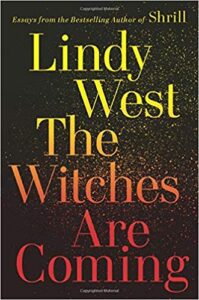 The Witches Are Coming by Lindy West
The Witches Are Coming by Lindy West
Format: Audiobook; Length: 6.5 hours
“This is a witch hunt. We are witches and we are hunting you” goes the hook in The Witches are Coming the newest collection of essays by Lindy West. Author of Shrill and creator of the subsequent show by the same name, West delivers another volume of essays intersecting pop culture, feminism and political critique in this equal parts gracious, funny and searing read. I particularly enjoyed her essay examining whether or not Adam Sandler movies are actually funny (and what they taught men) and her essay on why we find Ted Bundy charming but not Elizabeth Warren is the essay I needed in my life this political season.
Poetry
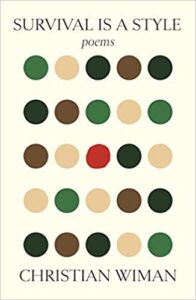 Survival is a Style by Christian Wiman
Survival is a Style by Christian Wiman
Format: Hardcopy; Length: 112 pages
Christian Wiman has long been a favorite poet of mine. If you are not familiar with his work this interview Krista Tippett will give you a feel for him and his work. So when I heard that he was releasing another book of poetry, I was so excited. This volume is a mix of the poetry I’ve grown to love from Wiman and some unexpected departures from what I’ve grown to expect. Altogether I enjoyed Survival is a Style and it’s examination of questions and doubt as a valuable expression of faith.
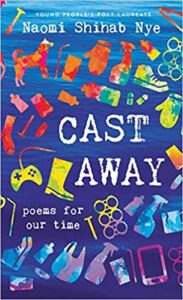 Cast Away: Poems for Our Time by Naomi Shihab Nye
Cast Away: Poems for Our Time by Naomi Shihab Nye
Format: Hardcopy; Length: 176
I love the poetry of Naomi Shihab Nye and I have a special sentiment in my heart for her as she’s the one that taught me to read poetry to my children frequently just for the pure enjoyment. Cast Away is an ode to all the things we dispose of–trash, recycling, plastic bottles, people. I found it interesting but a departure from her other work that made it hard to manage my expectation.
Like what you’ve read? Want more? Sign up for my twice a month newsletter (because we’re not spammy) and get original content you can’t find here on the blog. Reflections on faith and living, book recommendations and other good, nerdy fun. Sign up HERE.
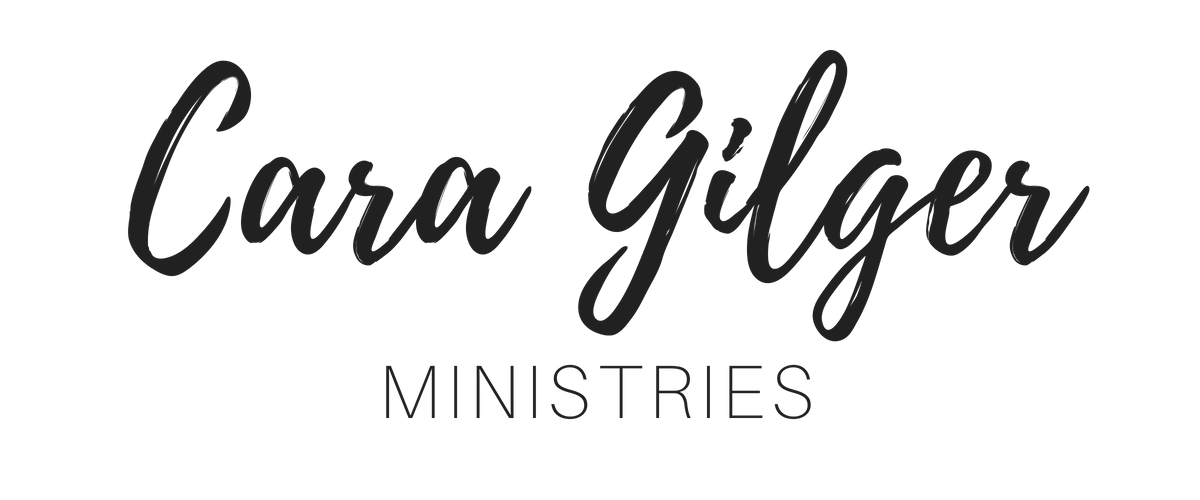
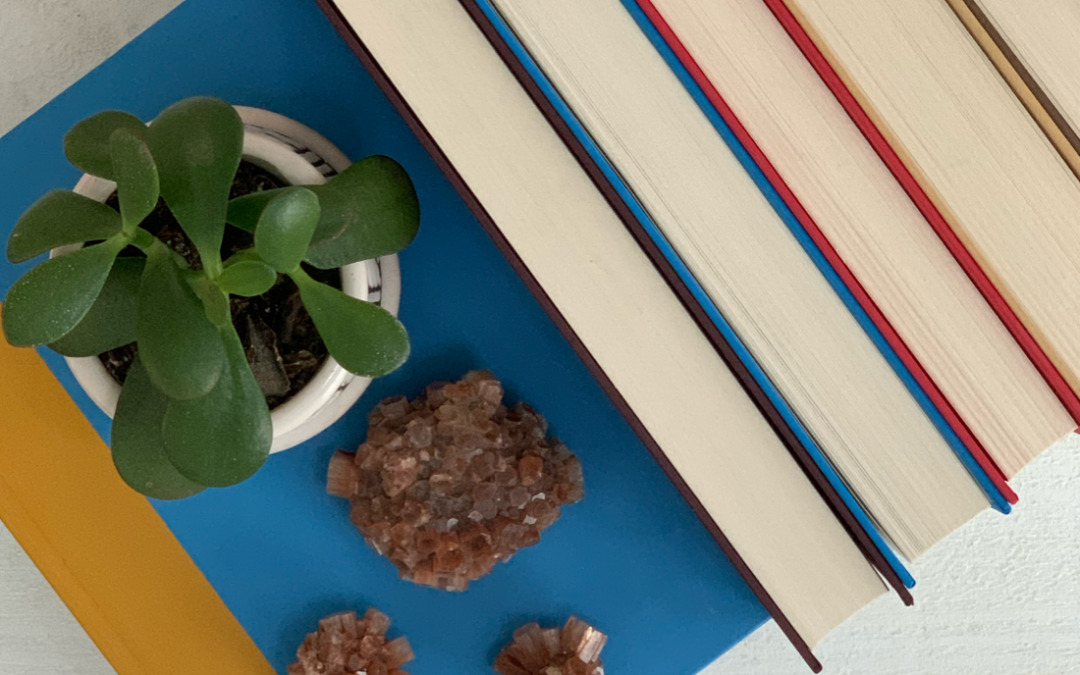

Recent Comments